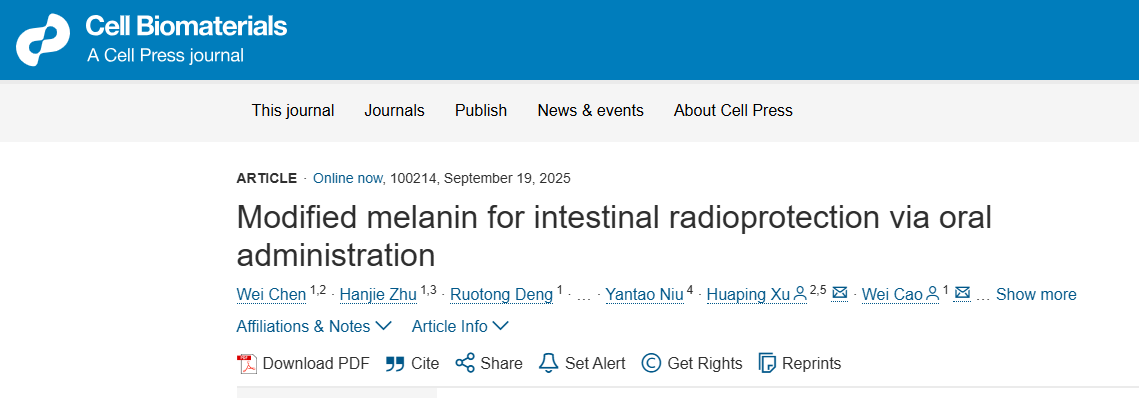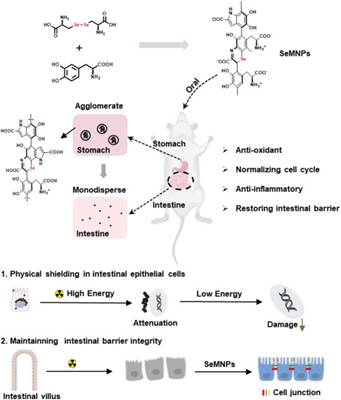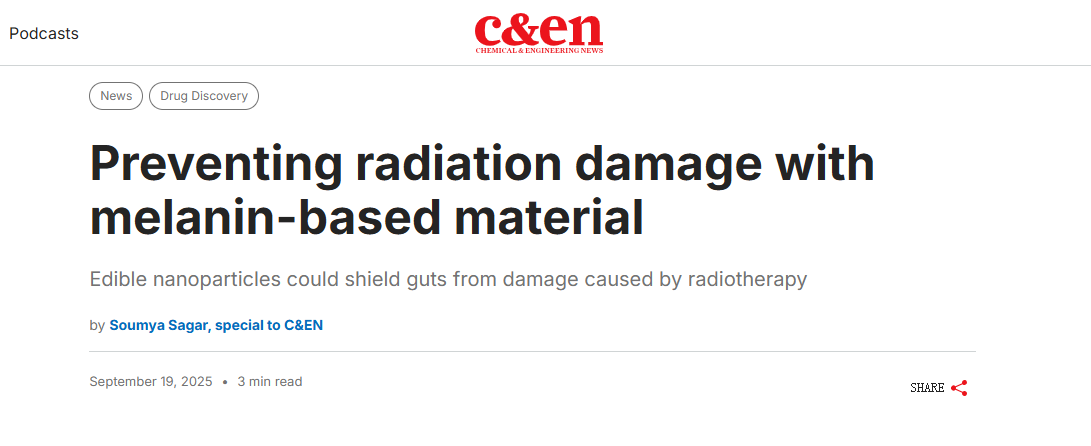Professor Cao Wei's Research Group from the College of Chemistry Published an Article in Cell Biomaterials
Professor Cao Wei's research group from the College of Chemistry at Beijing Normal University has published an important research achievement in Cell Biomaterials, entitled "Modified melanin for intestinal radioprotection via oral administration".


The American Chemical Society's Chemical & Engineering News featured a special report on this research.(https://cen.acs.org/pharmaceuticals/drug-discovery/Preventing-radiation-damage-melanin-based/103/web/2025/09)

The abstract of the paper is as follows:
In this study, we propose a new strategy for alleviating radiation-induced intestinal injury through oral use of nature-like polymers. Drawing inspiration from intracellular amino acid metabolism, we copolymerized selenocysteine with levodopa, a natural tyrosine analog, to synthesize a novel melanin-based material. Compared with natural melanin, selenocysteine-modified melanin offers the following advantages: antioxidant properties, radiation energy attenuation capability, and enhanced bioavailability. Consequently, SeMNPs emerge as a promising candidate for the next generation of in vivo radioprotective agents. We reveal a unique pH-dependent aggregation-dispersion mechanism within the gastrointestinal tract. SeMNPs aggregate in the acidic environment of the stomach and redisperse in the weakly alkaline intestinal fluid, creating an optimal time window for intestinal epithelial cell internalization and significantly enhancing bioavailability. SeMNPs mitigate radiation-induced intestinal injury through various pathways, including scavenging reactive oxygen species, preventing cell cycle arrest, reducing epithelial cell damage, inhibiting intestinal inflammation, and restoring the intestinal barrier. Moreover, SeMNPs increased the survival rate of mice from 20% to 100% after total body irradiation by alleviating damage to other major organs and reducing the impact on the hematopoietic system. We are confident that this study offers valuable insights into the development of emerging materials for in vivo radioprotection as well as oral delivery of drugs and biomacromolecules in general.
Reference: https://www.cell.com/cell-biomaterials/fulltext/S3050-5623(25)00205-3


